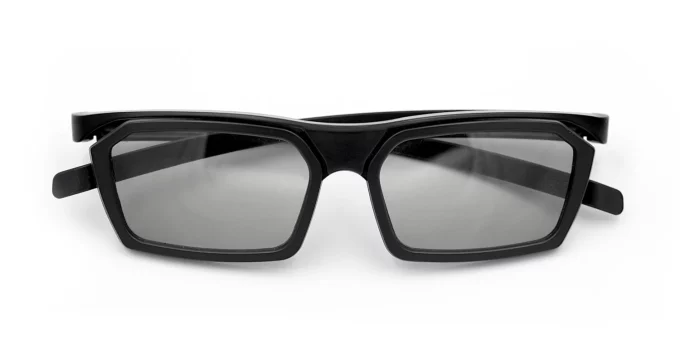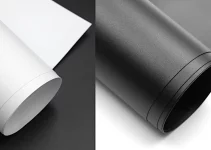The focus of my guide on 3D projectors and what you need to know will be on how they work and what type of glasses you need. I also want to mention that in general there’s no need for a special screen.
However, the most important thing is to understand that, in the end, 3D viewing is just an additional feature, a bonus.
This additional feature is not the focus of major brands and it’s not advertised as such. We can have both DLP and LCD 3D projectors and that’s why the large majority are lamp-based.
The features that truly matter for 3D projectors remain the same features that we look at when we’re buying a projector for whatever purpose we need: resolution, brightness (lumens), lamp life, chip technology, sharpness, contrast ratio, connections, portability, etc.
The 3D is really just a bonus that is not even made a central focus by some brands. Epson is a clear example of that but so are the other brands that include this technology in their models, like ViewSonic or Optoma.
Table of Contents
The Two Types of 3D Projectors
Let’s start with the fact that we have two types of projectors that support 3D viewing: 3D ready projectors and full HD 3D projectors. However, as you’re going to see this categorization is really not that big of a deal.
Most often than not, manufacturers don’t even use these 2 terminologies to inform us about the type of 3D projector that we’re looking at. These are not terminologies recognized by an international standard, like it happens with lumens as a measure for brightness.
1. 3D ready
3D ready means that the device supports at least one of the available 3D input formats. It means that it supports 3D viewing.
Another implication is that projectors can have a wide array of resolutions: XGA, WXGA, HD 4K are some of the most common examples. You’ll see why I leave 1080p out of this enumeration.
For example, the ViewSonic PS600X is a cheap 3D ready projector that can display 3D images directly from 3D Blu-ray players via one of its HDMI 1.4 ports. You will need to buy the glasses separately. Well, don’t expect the same experience you get from cinemas and keep in mind that this particular model has a native XGA (1024×768) resolution, which is quite low.
On the other hand, we can certainly buy 4K 3D ready projectors if we want absolute impressive quality and we can afford them.
Epson Home Cinema 4010 is a 4K device but it only plays Full HD 3D content so we could say that’s a Full 3D projector but it also works if we categorize it as 3D ready. It doesn’t matter that much.
2. Full 3D
Full 3D means that the projector has a Full HD resolution and it’s 3D ready. Therefore, there are two things that Full 3D indicates: 1080p native resolution, which is really good, and that it supports 3D viewing.
Basically, the only difference between 3D ready and Full 3D is the resolution, which is a fundamental difference between projectors in general.
For example, Optoma HD142X is Full 3D because it has a full HD resolution. However, just like the model from ViewSonic, it comes with a HDMI 1.4 port which can display 3D content from almost any 3D source (3D Blu-ray players, 3D broadcasting and the latest generation games consoles).
Another example of a Full 3D device is the Epson Home Cinema 2100, which has a 1080p native resolution and displays 1080p 3D content via its HDMI 1.4 port.
How 3D Projectors Work
3D projectors are devices that have the hardware/technology necessary to create three dimensional images on a two-dimensional surface (regular projector screen).
In general, projectors are labeled as 3D ready to indicate this particular capability.
If you want a visual presentation of how 3D projection works, you can check out this video. Basically, two slightly different pictures are created for each eye, which are then processed into a stereoscopic image.
Projectors use frame sequential 3D (page flipping) that alternates between a frame to be viewed by the left eye and a slightly different one to be viewed by the right eye. It goes on and on in this alternating fashion until the end of the movie.
In our daily lives, we are able to perceive depth because each of our eyes sees a different view of the same object. This is called stereoscopic vision and that’s why those got the name of stereoscopic images.
What Do You Need for a 3D Projector?
Besides getting a high-quality projector, you also need a pair of good glasses to make our brain perceive the images as 3D.
Other things you need are 3D video devices (Blu-ray players are the most commonly used) and a compatible HDMI cable.
The screen is the general one we use for all types of projectors, you don’t need anything special in this area.
What Type of 3D Glasses Should You Use?
In order to view and enjoy 3D content, we absolutely need glasses, more specifically active 3D glasses.
Usually, those are sold by the projector’s manufacturer or you can buy whatever other brand you want.
The main role of the glasses is to ensure that each eye only perceives the image intended for it.
However, there are two types of glasses to use with 3D projectors: active and passive 3D glasses.
Passive glasses don’t contain any active components, hence the name passive. It’s what we’re usually offered at movie theaters. Obviously, they’re also cheaper. But they’re also known for poorer image quality. Nowadays, they’re not used with projectors. The active ones are most likely the ones we need.
Active glasses contain a special feature, a battery-powered electronic device that alternatively blocks the view for our left eye and the view for our right eye. As I’ve said, each eye sees a slightly different image.
When the image is intended for our left eye, the left lens turns transparent and the right lens turns opaque. And vice-versa. There’s an IR sensor embedded in the glasses that receives signals indicating the correct eye for each frame.
Which type of glasses you’re going to buy actually depends on what type your projector requires.
If we look at ViewSonic, we’re going to notice that their glasses are active. The same goes for Optoma and for Epson.
Passive 3D projectors will work with passive glasses. However, nowadays, projectors are active and they require active glasses, the type that are battery-powered.
Do 3D projectors need a special screen?
No, they don’t.
It’s not the screen that can create 3D viewing experiences. It’s the 3D hardware that the projector comes with and the 3D glasses that you’ll most likely have to buy separately.
Are 3D projectors worth it?
That is a loaded question because when we’re asking if some technology or device is worth it, it’s quite a personal thing since we are all so different in our needs, expectations, hobbies, budgets, etc.
The world of 3D movies has remained a constant presence in the market but it still addresses a niche. And I’m not so sure that it translates into a large niche when it comes to actually wanting to buy a 3D projector.
For plenty of people, getting a full 3D projector is not at the top of their list. It’s just a nice bonus but not the main reason for buying a certain model.
If you’re truly passionate about adding the capability of playing 3D content to your home theater experience, then these niche projectors will be totally worth it. As long as you can get a really good one, which is where my guide on 3D projectors and what you need to know comes in.
For me, 3D projectors are not worth it but that’s only because I’m not their targeted audience. I have watched plenty of 3D movies to just know that they’re not at the top of my list. They’re entertaining if the movie is actually good and has a nice plot but I can never get my brain to just shut up and not point out every single time that it’s an illusion. It’s like trying to get scared by horror movies when your brain is actually shouting that it’s just a movie.
So, yeah, I’m that person that gets captivated by a good story and a good cast of characters rather than the visual effects. I love good cinematography equally but good cinematography alone won’t ever make a movie memorable.
Just like 3D capability alone won’t make a device totally awesome. I guess that’s another thing that I wanted to emphasize as I end my guide on 3D projectors and what you need to know.




